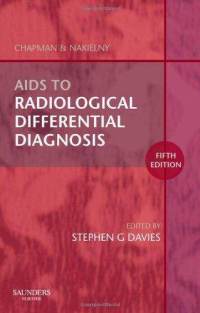I’ve been reading and annotating this book for close to a month now, and I barely scratched the surface in terms of absorbing the enormous amount of useful information stuffed into this relatively small 500 page handbook.
Aids to Radiological Differential Diagnosis (2009), edited by Stephen G. Davies, is an extremely helpful handbook for interpreting imaging studies. For each radiographic finding, the book provides a differential diagnosis based on frequency, from most to least frequent. For example, according to one of the authors (writing on page 153) the differential for toxic megacolon is:
- inflammatory: ulcerative colitis, Crohn’s disease, and pseudomembranous colitis
- ischemic
- dysenteric : amoebiasis, salmonellosis.
This seems pretty accurate. (Primer of Diagnostic Imaging, Fifth Edition, lists a very similar differential diagnosis, except that it lists CMV colitis instead of salmonellosis). Similarly, the thumbprinting sign (p. 154) is seen in various colitides, such as ulcerative colitis, Crohn’s disease, ischemic colitis, amoebic colitis and schistosomiasis, which would be a terrific thing to know in the appropriate setting.

This is exactly the kind of book you need to reach for when you see a radiographic finding, or read about one in a radiology report, and you need to know alternative interpretations for those findings.
The book has no reproductions of actual radiographs. This is actually a good thing. This book is very much about the lists, not the pictures. There are a few diagrams, but for pictures, one needs to look elsewhere, for example the Learning Radiology website.
In future editions, I would like to see better indexing and cross referencing. Some items appear in the book (for example Pneumocystis carinii on page 106), but not in the index. Further, it would be helpful if incidental mentions of various diagnoses were cross-referenced to their main entries elsewhere in the book.
Overall, I recommend Aids to Radiological Differential Diagnosis to anyone who reads and interprets imaging studies, especially general practitioners and radiologists. It is simply a terrific book to have around.


Leave a Reply